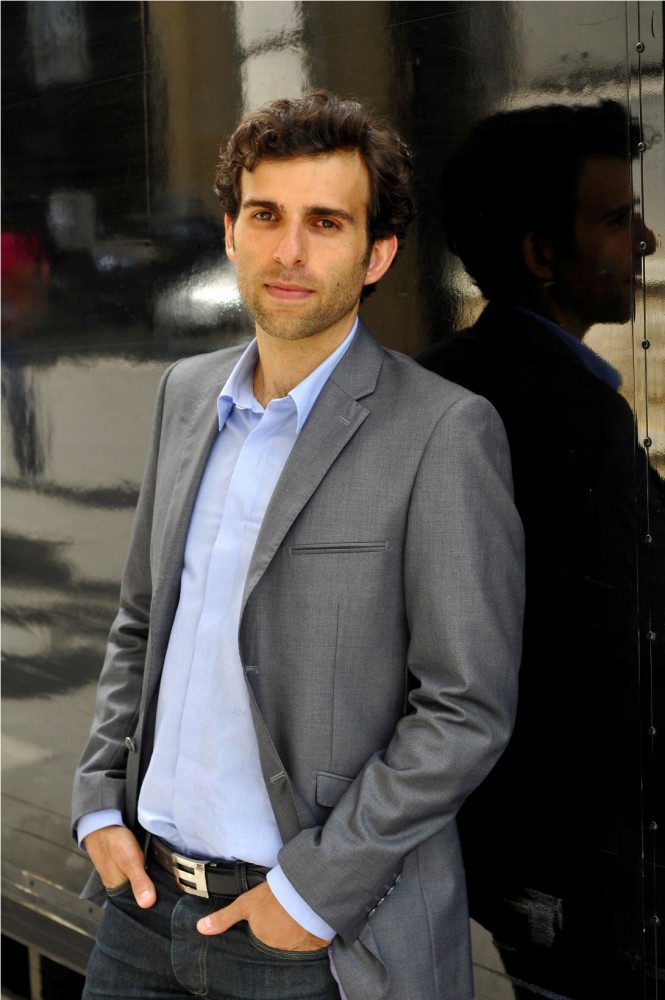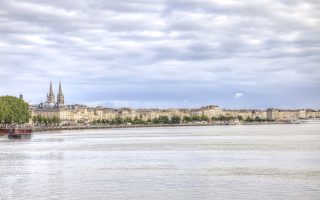Vahram Muratyan

A small cup of espresso next to a large mug of coffee. Amélie from Montmartre facing Carrie from the Upper East Side. Bobo opposed to hipster. La Ville Lumière against the Big Apple—French graphic artist and designer Vahram Muratyan’s Paris versus New York is a stunning visual book that racked up heady holiday sales of more than 40,000 copies in France. First launched in a blog of the same name before being exhibited in top Parisian concept store Colette, Muratyan’s collection of simple but sharp and witty drawings hit US bookstores in February, published by Penguin.
Tracking gentrification, urban evolution and contemporary paradoxes through tiny-but-telling cultural aspects, Paris versus New York is the result of a life spent mostly in Paris, and several years wandering in New York, either for work or on vacation. “I’ve grown up with the dream of traveling, discovering new worlds and confronting them,” says the voluble Muratyan, 31, son of an Armenian family that moved from Anatolia to Istanbul, Venice and finally Paris. The east to west momentum could only carry him on to New York, a city he discovered when he was just a child. “My mother worked for TWA, so I had the occasion to travel there quite often. I also learned English very young, and I was always curious about American culture. Hardly anything was more exciting for me than crossing the Atlantic.”
Later, as he began traveling on his own, watching as the city evolved, he found himself closely linked to several key moments of the city’s recent past. “On September 11th I lost someone in the towers, and I had a nervous breakdown that day,” he recalls with emotion. “Then, in 2003, I was there during the blackout, and I sensed the tension that still prevailed, but also the huge sense of public spirit in the city. And in 2008 I witnessed the panic after the fall of Lehman Brothers, with all the bankers and traders in the streets with their cardboard boxes. That’s when I understood to what extent the world was living on New York time.”
Beyond clichés
But it wasn’t until about 18 months ago that the young graphic-arts-school graduate and designer decided to forge an artistic bond with the Big Apple. “I was traveling in New York again in 2010 when I had a click,” he explains. “I stayed a few months and began focusing on the urban culture of the city, on all these little details you can see when walking across the city, taking the bus or riding a bike. It was the first time that I managed to notice new things, besides the usual clichés—little elements of urban life that were new and original, but still very different from their Parisian counterparts.”
That’s when he began drawing, beginning with the different views the two sides of the Atlantic had about the correct amount of a tip and the proper size of a coffee. “I tried to keep up with a rhythm of one picture a day—that’s why I had to keep them so simple,” he jokes. “After the first few ideas, I began doing a huge amount of research. I wanted to browse specific aspects of the urban life, besides what you can usually read or see in the movies: gastronomy, fashion, geography, architecture…” Throughout the book, his cartoon-like drawings explore these themes with humor, wit, a little bit of mockery (especially on the subject of Parisian taxis), but mostly a good-natured tenderness for both cities.
A few of his drawings express true artistic genius—for example, the minimalist comparison of film directors Jean-Luc Godard and Woody Allen—nearly identical pairs of glasses with different eye expressions, delineated in just four dots. Others show a real comprehension of the social mechanics of urbanism, like the mixed maps of New York and Paris, where each city is presented with the corresponding neighborhoods of the other.
Soon realizing that the drawings were worth sharing, Muratyan started a blog in October 2010—less a website than an online travel journal. But, he says, he never imagined it would become so widely buzzed-about. “At first there were 300 views, meaning only my friends. But suddenly, one weekend, I had more than 5,000! I didn’t understand it at first, until I found out that my blog had been cited by The Cool Hunter, a trendy website. Then there was a buzz on Twitter and Facebook, and the blog became a popular gallery.” With over three million visitors since its launch, it’s on its way to being as crowded as its subject cities.
Magnetic attraction
Publishing a collection of the images, as well as a few posters on demand, was the next logical step. Now a freelance designer and director of his own studio specializing in greeting cards, Muratyan says he doesn’t want to stop there, and that he has a few more ideas in mind. But don’t expect a new series about London or Los Angeles, or any other international metropolis.
“Paris and New York are like two magnets, opposed but somehow united by the same patterns,” says Muratyan. “That’s why there is such a mutual fascination. We often say that Parisians are obsessed with New York, but it is also true on the other side. It’s no surprise that the Sex and the City series ends up in Paris for its big finale. But there’s also tremendous rivalry: the Empire State Building was meant to surpass the Eiffel Tower! I don’t think there is any such rivalry now between New York and London, or Shanghai. You could endlessly list the best cities for quality of life—say, Vancouver or Stockholm or Munich—but in the end, the cities you keep dreaming about are New York and Paris.”
A typical child of globalization, Muratyan nonetheless remains a huge advocate of national identity and local folklore. “I think it is a good thing that we don’t share the same culture. I wouldn’t want to see Paris forced into Americanization. It’s like two old friends who sometimes disagree, maybe even fight, but in the end they always reconcile.”
As for what might be the sex of these two friends, the author/artist is adamant: “They are both feminine cities: one is my regular wife, the other is my mistress. But if there were a match between the two, I couldn’t sacrifice either of them, so I would say there is no winner. Or better, I’d say we’ve got two winners.” Who would contest such a tie?
Paris versus New York, Penguin, 224 pages. website
Orinally published in the February 2012 issue of France Today
Share to: Facebook Twitter LinkedIn Email
Leave a reply
Your email address will not be published. Required fields are marked *



